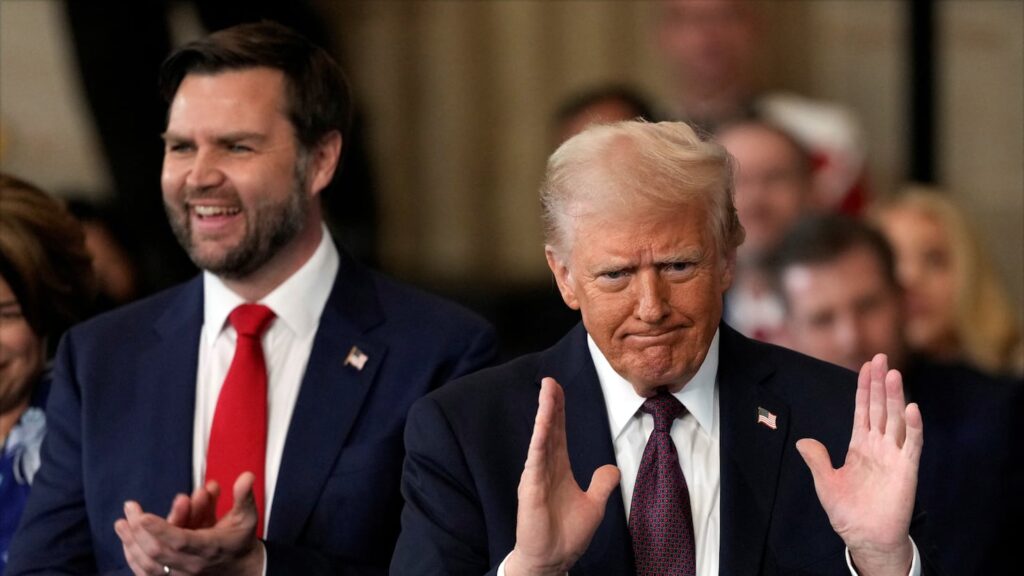Donald Trump’s Presidency: A Focus on Women’s Sports and Transgender Policies
Donald Trump has officially taken the oath as the 47th President of the United States, embarking on his political agenda with significant executive actions. The new president has already enacted several executive orders that impact areas including immigration, the economy, and sports.
Political Priorities and Gender Dynamics in Sports
Within the Republican Party, the exclusion of transgender women and girls from sports has emerged as a key issue. The president has committed to taking action against these athletes. Despite the fact that transgender individuals represent a small fraction of the population, the GOP’s focus on this topic demonstrates how divisive politics can rally a voter base. However, the longevity of this approach remains uncertain, as it has previously led to victories in two presidential elections, after which control was ceded back to Democrats just two years later. Meanwhile, Democrats are seeking to regain traction by appealing to voters during their time in opposition.
The Societal Impact of Gender Policies
The emphasis placed on women’s sports and transgender athlete participation by Trump’s administration is illustrative of the weight these matters are perceived to hold within the party’s base. It’s notable that only around 1% of Americans identify as transgender, with even fewer aspiring to compete at elite levels. Yet, Trump made the prohibition of transgender athletes in women’s sports a central point of his campaign, particularly targeting transgender women within school sports.
Trump’s Commitment to Gender Binary Policies
The president has publicly stated, “men must be kept out of women’s sports.” Prior to his inauguration, he expressed intentions to “put an end to the transgender madness,” proclaiming that “there will only be two official genders, male and female.” Following his election, Trump confirmed that banning transgender girls from women’s sports would be among his top priorities right from his first day in office.
The Consequences for Athletes
This intense spotlight on the subject poses real risks to transgender and intersex athletes, in addition to cisgender women who simply wish to compete. Instances of transgender women outcompeting cisgender women at elite levels are extremely rare, yet fears surrounding this matter manifested during the recent Olympics. For example, Algerian boxer Imane Khelif was wrongly accused of being transgender, leading to significant public backlash. The Italian boxer responsible for the allegations, Angela Carini, later extended an apology for the harm caused to Khelif.
Issues with Binary Gender Classification
Khelif’s case exemplifies the problems arising from adherence to a strict binary classification of gender. This rigid categorization can also create challenges for cisgender women in the sports arena. An example includes a U.S. long-distance swimmer and gold medalist, Katie Ledecky, who faced allegations of being transgender, resulting from the unfounded claims made by internet vigilantes. This scrutiny not only undermines the legitimacy of female athletes but also calls their womanhood into question.
Broadening the Understanding of Gender in Sports
When strict categorizations are imposed based on gender, any deviations are often politicized, with those individuals portrayed as threats. For athletes who do not conform to the traditional XX and XY chromosomal structures, navigating these rigid classifications can present significant hurdles, particularly when genetic makeups are viewed as competitive advantages.
Current Guidelines and the Future of Transgender Participation
In response to these issues, the International Olympic Committee (IOC) has set guidelines permitting individual sporting federations to determine their regulations regarding participation. However, many federations, including World Athletics and World Rugby, have moved to exclude transgender athletes from elite competitions. In contrast, organizations like the Ladies Professional Golf Association (LPGA) impose restrictions on athletes who transitioned after puberty from competing in specific categories.
Addressing the Broader Implications
As these discussions advance, it is evident that policies aimed at transgender athletes risk marginalizing an already vulnerable demographic while also posing critical questions about fairness, equity, and diversity in sports. These complex issues remain largely unresolved and are underproductive in public discourse.


